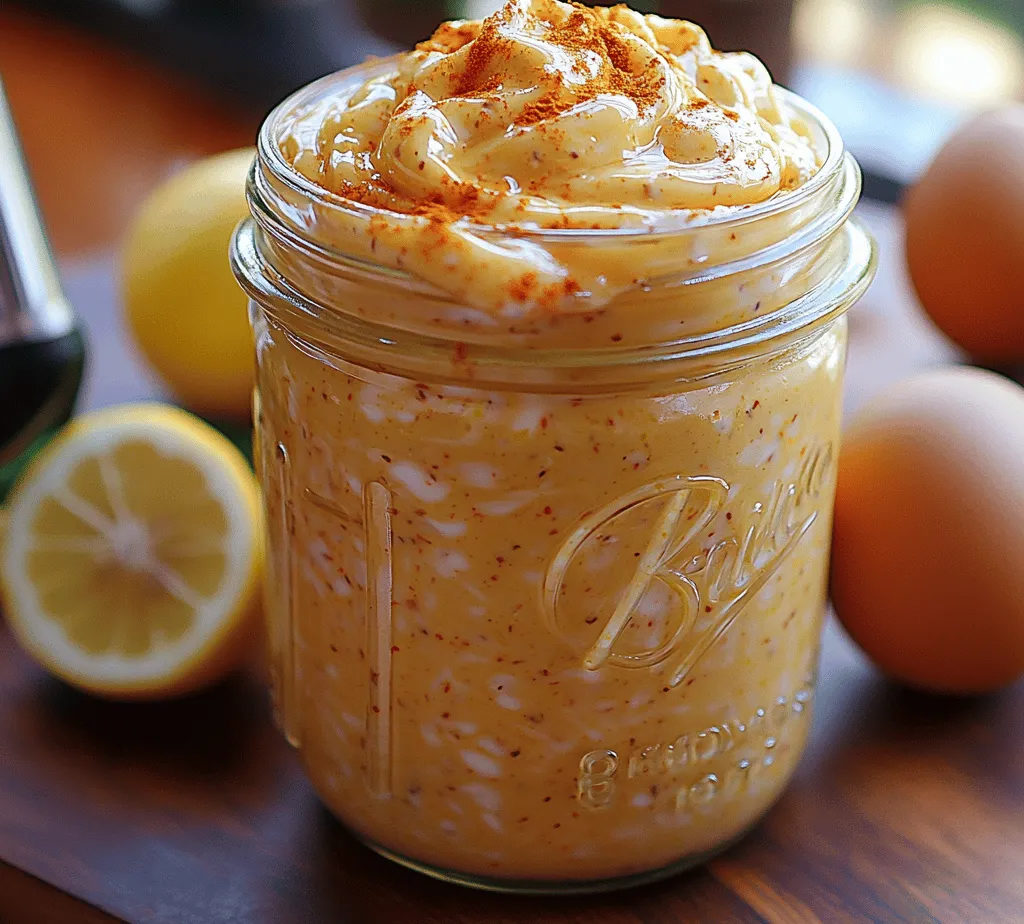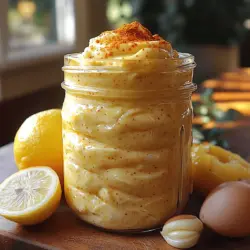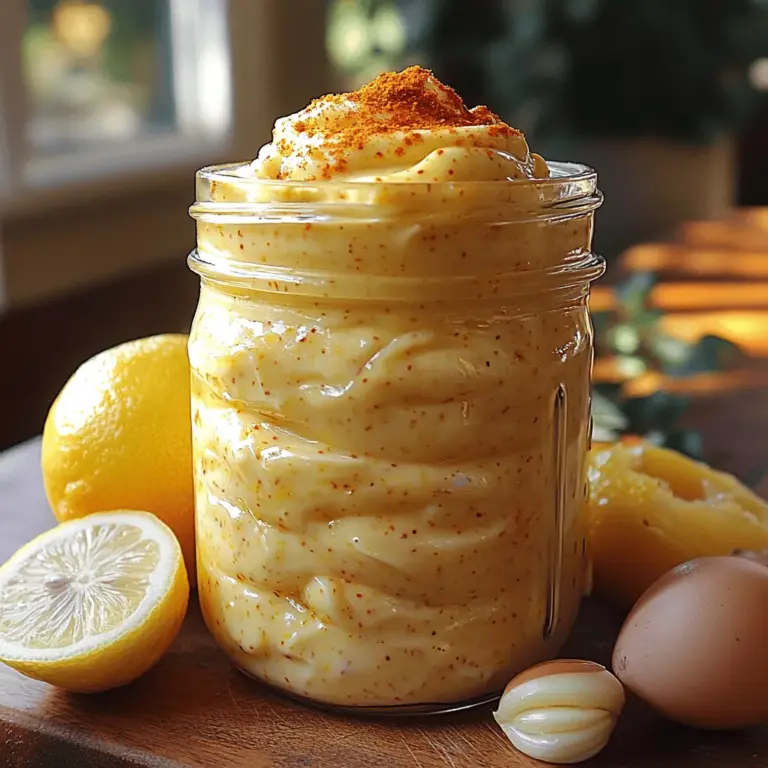Introduction
In recent years, there has been a noticeable shift in how people approach cooking and food preparation, with many home chefs opting to make their own ingredients from scratch. Among these homemade staples, mayonnaise has emerged as a popular choice for those looking to elevate their culinary skills. Homemade mayonnaise not only offers a fresher taste than its store-bought counterpart, but it also allows for full control over the ingredients that go into this classic condiment. Whether you’re spreading it on a sandwich, mixing it into a salad, or using it as a dip, homemade mayonnaise can transform your meals from ordinary to extraordinary.
The benefits of making mayonnaise from scratch are manifold. For starters, the flavor is rich and creamy, without the preservatives and artificial ingredients often found in commercial varieties. Additionally, you can customize the taste to suit your preferences, whether you prefer a tangy kick from lemon juice or a more pronounced flavor from Dijon mustard. This recipe is not only simple but also quick—allowing you to whip up a delicious batch of mayonnaise in just a few minutes.
As you venture into the world of homemade mayonnaise, you’ll find that the process is straightforward and requires only a few essential ingredients. With a little knowledge and the right tools, you’ll be able to impress your family and friends with your culinary prowess while enjoying the satisfaction that comes from making something delicious and homemade.
Understanding Mayonnaise: A Brief History
The origins of mayonnaise can be traced back to the 18th century, with several theories about how this beloved condiment came into being. One popular story claims that it was created in 1756 by the chef of the Duke of Richelieu after a victory in the port city of Mahón, Spain. The dish, a sauce made from egg yolks, oil, and vinegar, became known as “mahonnaise,” eventually evolving into the mayonnaise we know today. Regardless of its exact origins, mayonnaise has become a staple in many kitchens worldwide, prized for its versatility and ability to enhance the flavors of a wide variety of dishes.
Mayonnaise is commonly used as a base for many sauces and dressings, including aioli, tartar sauce, and remoulade. Its creamy texture makes it an excellent binding agent for salads, such as tuna, chicken, or egg salad, and it serves as a delicious spread for sandwiches and burgers. In addition, mayonnaise is often used in recipes for coleslaw and potato salad, adding richness and depth to these beloved side dishes.
From a nutritional perspective, homemade mayonnaise offers several advantages over store-bought versions. While commercial mayonnaise often contains preservatives, high-fructose corn syrup, and other additives, homemade mayonnaise allows you to select high-quality ingredients. This means you can avoid artificial components and tailor the recipe to meet your dietary needs. Additionally, you can control the amount of fat and calories in your mayonnaise, leading to a healthier overall condiment.
Ingredients Breakdown
Creating the perfect homemade mayonnaise requires just a handful of ingredients, each playing a crucial role in the emulsification process and flavor profile. Here’s a detailed look at each one:
The Large Egg
At the heart of any mayonnaise recipe is the egg, specifically the egg yolk, which acts as a natural emulsifier. The emulsion process is what allows the oil and water-based ingredients to blend together, creating a smooth and creamy texture. For best results, it’s essential to use room-temperature eggs, as the warmth helps to stabilize the emulsion. Cold eggs can lead to separation, making it difficult to achieve that creamy consistency we all love.
Dijon Mustard
Dijon mustard is not just a flavor enhancer; it also contributes to the emulsification process. The mustard’s natural emulsifiers help bind the oil and egg yolk together, resulting in a stable mayonnaise. Additionally, it adds a subtle tanginess that elevates the overall flavor profile. If you’re looking for a milder taste, feel free to adjust the amount of mustard to suit your palate.
White Vinegar vs. Lemon Juice
When it comes to acidity, you have the option of using either white vinegar or lemon juice in your mayonnaise. Both ingredients serve to brighten the flavor and provide the necessary acidity to balance the richness of the egg and oil. White vinegar offers a sharper, cleaner taste, while lemon juice introduces a fresh, zesty flavor. The choice ultimately comes down to personal preference; feel free to experiment with both to see which version you prefer.
Neutral Oil Options
The type of oil you choose significantly impacts the flavor and texture of your mayonnaise. Neutral oils such as canola, grapeseed, or sunflower oil are ideal choices, as they allow the flavor of the egg and mustard to shine through without overpowering it. Avoid using oils with strong flavors, like olive oil, as they can dominate the mayonnaise’s taste. The oil’s quality is crucial; using a high-quality oil will yield a superior final product.
Sea Salt
Seasoning is critical in any recipe, and mayonnaise is no exception. Sea salt enhances the overall flavor, ensuring that your mayonnaise is well-balanced. It’s essential to add salt gradually, tasting as you go, to achieve the perfect seasoning level. Remember, you can always add more, but you can’t take it out once it’s in!
Optional Garlic
For those who love a burst of flavor, adding minced garlic to your mayonnaise can elevate it to new heights. Garlic-infused mayonnaise, often referred to as aioli, offers a delightful twist that pairs well with sandwiches, fries, and grilled meats. If you’re a garlic lover, consider adding a clove or two to your mayonnaise for an extra layer of flavor.
Essential Tools for Making Mayonnaise
While making homemade mayonnaise is a straightforward process, having the right tools can make all the difference in achieving the perfect consistency and texture. Here are the essential tools you’ll need:
Immersion Blender
An immersion blender is perhaps the most efficient tool for making mayonnaise. This handheld device allows you to blend the ingredients directly in the container, facilitating quick emulsification. The powerful motor creates a vortex that pulls the oil into the egg yolk, resulting in a smooth and creamy mayonnaise in mere seconds.
Alternative Methods
If you don’t have an immersion blender, don’t fret! You can still make mayonnaise using a whisk or a food processor. Whisking by hand requires a bit more elbow grease and patience, but it’s certainly achievable. Just be sure to add the oil very slowly at first, allowing the emulsion to form properly. A food processor is another excellent option; simply combine the ingredients and pulse until the mayonnaise reaches the desired consistency.
Suggested Container
When it comes to blending and storing your mayonnaise, a mason jar is an excellent choice. Not only does it provide a sturdy vessel for mixing, but it’s also perfect for storing your homemade mayonnaise in the fridge. The airtight seal of a mason jar helps preserve freshness, allowing you to enjoy your mayonnaise for up to a week.
—
As we delve deeper into the process of making creamy, dreamy homemade mayonnaise, the following sections will provide you with step-by-step instructions to ensure perfect results every time. With just a few simple ingredients and the right techniques, you’ll be well on your way to mastering this delicious condiment. Stay tuned for the next part, where we’ll guide you through the process of creating your own mayonnaise from start to finish!

Preparing the Workspace and Tools for Efficiency
Before diving into the creamy, dreamy world of homemade mayonnaise, it’s important to set up your workspace effectively. A clean and organized kitchen not only enhances your cooking experience but also minimizes the chances of mistakes.
Tools You Will Need:
1. Immersion Blender or Food Processor: An immersion blender is ideal for making mayonnaise, as it allows for easy blending directly in the mixing container. If you prefer to use a food processor, that works too, but it may require additional cleanup.
2. Measuring Cups and Spoons: Accurate measurements are crucial for the right flavor balance and emulsion.
3. Mixing Container: Choose a tall, narrow container for an immersion blender or a bowl that fits snugly in the food processor.
4. Spatula: A silicone spatula is best for scraping down the sides and ensuring all ingredients are well combined.
5. Whisk (optional): If you prefer to make mayonnaise by hand, a whisk can help with aeration during blending.
Ingredients Preparation:
Gather all your ingredients and measure them out before starting. This will streamline the process and prevent any last-minute searches through the pantry. Ensure your eggs are at room temperature for the best emulsion.
Detailed Instructions for Each Step
Combining Ingredients Correctly for Optimal Emulsion
1. Add the Egg: Begin by cracking a fresh egg into your mixing container. The egg is the key emulsifier in this recipe, so make sure it is fresh and at room temperature.
2. Add the Acids: Pour in the vinegar or lemon juice. This acidity not only adds flavor but also helps stabilize the emulsion. For a tangier taste, lemon juice is a great choice, while vinegar will give a sharper bite.
3. Incorporate Mustard: Add the Dijon mustard, which enhances flavor and helps with emulsification. Mustard acts as a stabilizer that helps keep the oil and water mixed.
4. Season: Add salt to taste. This is essential for flavor but will also help to enhance the overall taste profile of your mayonnaise.
5. Pour in the Oil: Finally, slowly add your choice of oil. The oil should be at room temperature and can be a neutral oil like canola, avocado, or even olive oil for a richer taste.
Proper Technique for Blending with an Immersion Blender
1. Blend: Insert the immersion blender into the bottom of the container, making sure it covers the egg mixture. Start blending at the bottom, then gradually lift the blender while it’s running. This technique will help incorporate the oil gradually, forming a thick and creamy emulsion.
2. Watch the Transformation: As you lift the blender, you will see the mixture transforming into mayonnaise. This process typically takes about 30 seconds to 1 minute. Stop once the mixture is fully emulsified and has reached a thick, creamy consistency.
Tips for Achieving the Right Consistency and Texture
– Adjusting Thickness: If your mayonnaise is too thick, you can add a teaspoon of water to loosen it up. Blend again to combine.
– Too Thin?: If your mayonnaise is too runny, it may not have emulsified properly. To fix this, add another egg yolk to a clean container, and while blending, slowly drizzle in the thin mayonnaise until it thickens up.
– Chilling: Once prepared, refrigerate your mayonnaise. Chilling allows the flavors to meld and improves the texture.
Flavor Variations and Customizations
One of the joys of making homemade mayonnaise is the versatility it offers. Here are some delightful flavor variations to consider:
Spicy Variations: Adding Sriracha or Cayenne Pepper
For those who love a kick, adding sriracha or a pinch of cayenne pepper can transform your mayonnaise into a spicy delight. Start with a teaspoon of sriracha, blend it in, and taste. Adjust to your spice preference.
Herbal Infusions: Incorporating Fresh Herbs Like Dill or Basil
Fresh herbs can elevate your mayonnaise from ordinary to extraordinary. Consider adding chopped fresh dill for a classic taste or basil for a fresh, aromatic twist. Start with about 1 tablespoon of finely chopped herbs and adjust according to your taste.
Sweet Options: How to Create a Honey Mustard Mayo
For a sweet and tangy variation, mix in honey and additional mustard. A tablespoon of honey combined with a teaspoon of mustard creates a delicious honey mustard mayonnaise perfect for dipping or spreading.
Ideas for Using Flavored Mayonnaise in Recipes
Flavored mayonnaise can enhance various dishes. Use your spicy mayo as a dip for fries or veggie sticks, the herb-infused version in pasta salads, or honey mustard mayo on sandwiches for a delightful twist.
Storage and Shelf Life
Once you’ve whipped up your homemade mayonnaise, knowing how to store it properly is essential to maintain its freshness and flavor.
Best Practices for Storing Homemade Mayonnaise
– Container: Transfer your mayonnaise to a clean, airtight container. Glass jars with lids work perfectly and allow you to see the contents.
– Refrigeration: Store your mayonnaise in the refrigerator immediately after making it. Homemade mayonnaise should be kept cool to prevent spoilage.
Understanding the Shelf Life and Signs of Spoilage
Homemade mayonnaise typically lasts about one week when stored in the refrigerator. Always check for signs of spoilage before using it. Look for changes in color, texture, or an off smell. If any of these signs are present, discard the mayonnaise immediately.
Tips on Repurposing Mayonnaise in Other Dishes
If you find yourself with leftover mayonnaise, consider using it in various recipes. It can serve as a base for salad dressings, a rich addition to potato salad, or even a secret ingredient in baked goods for added moisture.
Comparing Homemade and Store-Bought Mayonnaise
When it comes to mayonnaise, there are significant differences between homemade and store-bought varieties that can impact your culinary experience.
Flavor and Quality Differences
Homemade mayonnaise boasts a fresher, more vibrant flavor compared to its store-bought counterpart. The absence of preservatives and artificial ingredients in homemade versions means you get a richer and more authentic taste that enhances your dishes.
Ingredient Transparency and Health Considerations
One of the major advantages of making mayonnaise at home is knowing exactly what goes into it. Store-bought brands often include fillers, preservatives, and unhealthy oils. With homemade mayonnaise, you control the ingredients, allowing for a healthier alternative.
Cost-Effectiveness of Making Mayonnaise at Home
While store-bought mayonnaise can be convenient, making it at home can be more cost-effective in the long run, especially if you enjoy its use. With just a few simple ingredients, you can whip up a large batch for a fraction of the price of premium brands.
Conclusion
Homemade mayonnaise is a delightful condiment that not only enhances the flavor of your dishes but also provides numerous health benefits and cost savings. The process is simple, and the results are incredibly rewarding. With the ability to customize flavors and create variations that suit your palate, there’s no limit to what you can do with this creamy concoction.
We encourage you to experiment with different flavors and uses in your everyday cooking. Whether you prefer a classic version or a spicy twist, homemade mayonnaise is sure to elevate your meals. Enjoy the satisfaction of creating your own condiments and the deliciousness they bring to your table.


